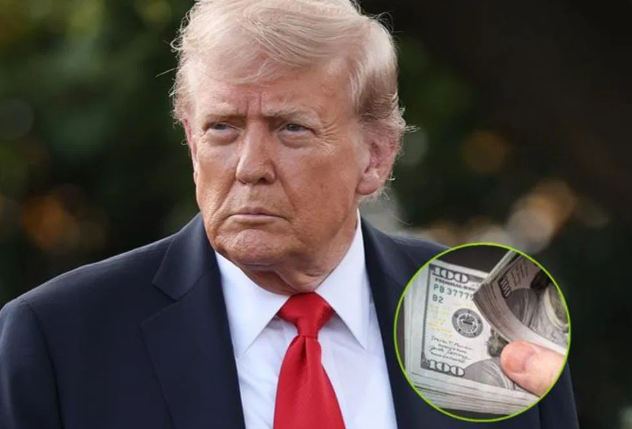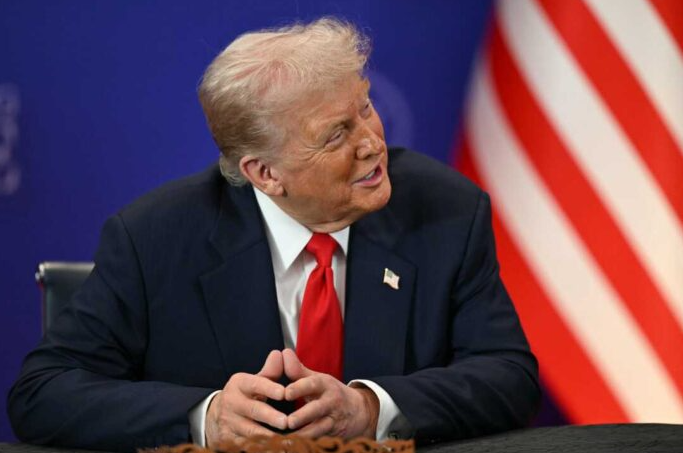People often find it prudent to approach Donald Trump’s announcements with careful consideration and measured expectations. The president possesses a well-established reputation for presenting statements with notable enthusiasm and amplified projections, a pattern evident throughout his public career and both terms in office, where many ambitious commitments ultimately remained unrealized.
Among the various pledges he has made, one recent proposal stands out as particularly likely to attract sustained attention: a plan to deliver a $2,000 payment to nearly every American household. Trump has explained that the source of these funds would derive directly from revenue generated by his expanded tariff initiatives. In his description, the payments would reach citizens across a wide range of income levels, with provisions to exclude those in the highest earnings brackets.
In a Truth Social post published last week, the president wrote: “People that are against Tariffs are FOOLS! With Almost No Inflation, and A Record Stock Market Price. 401k’s are Highest EVER. We are taking in Trillions of Dollars and will soon start paying down our ENORMOUS DEBT, $37 Trillion. Record Investment in the USA, plants and factories going up all over the place.”
He continued in the same message: “A dividend of at least $2000 a person (not including high income people!) will be paid to everyone.”
The announcement left several important details unspecified, including an exact timeline for distribution and precise guidelines determining who qualifies as “high income” or whether the payment would extend to children and dependents.
Observers across the political spectrum responded with thoughtful analysis and questions about feasibility. Leading publications examined the financial and legal dimensions of the proposal in detail. Estimates suggest that providing $2,000 to qualifying adults could require between $300 billion and $513 billion in total funding, depending on factors such as family composition and income thresholds.
Economist Erica York offered a clear breakdown during her review: “If the cutoff is $100,000, approximately 150 million adults would qualify, creating a program cost near $300 billion. Current tariff collections have generated roughly $90 billion in net additional revenue, which falls considerably short of the amount needed for a $300 billion distribution.”
Another significant consideration involves the legal foundation supporting the tariff revenue itself. The Supreme Court recently concluded oral arguments in a case challenging the administration’s authority to impose certain tariffs through emergency declarations. Three federal appeals courts have already determined that particular approach exceeds legal boundaries. Should the courts ultimately strike down those tariff measures, the anticipated revenue stream—and with it the funding for any citizen payment—would disappear entirely.
Despite these complexities, President Trump shared an updated perspective during a conversation with reporters while traveling aboard Air Force One. He indicated that implementation would likely occur in 2026, explaining: “It will be next year… The tariffs allow us to give a dividend. We’re going to do a dividend and we’re also going to be reducing debt,” according to coverage in The New York Post.
Treasury Secretary Scott Bessent addressed the matter during an appearance on Fox Business, emphasizing the need for congressional involvement: “We will see. We need legislation for that.”
Throughout his political career, President Trump has put forward numerous large-scale initiatives, many of which evolved or adapted over time as circumstances changed. Some observers note that certain earlier commitments—such as comprehensive infrastructure weeks or specific predictions about economic indicators—gradually receded from the forefront of public discussion.
This particular commitment, however, carries a different character because of its direct, personal nature. When a leader explicitly describes sending $2,000 to millions of households, that statement tends to remain vivid in people’s minds. Citizens who hear about a tangible financial benefit arriving in their bank accounts or mailboxes naturally remember the promise and look forward to its arrival.
Whether the dividend ultimately materializes in 2026 or takes a different form, the proposal has already sparked widespread conversation about trade policy, government revenue, and the most effective ways to return economic gains to American families. As legislative sessions approach and budget discussions intensify, many Americans will continue following developments surrounding this noteworthy initiative with great interest.
The coming months promise to bring greater clarity on funding mechanisms, eligibility requirements, and distribution methods. For now, the idea of a broad-based citizen dividend stands as one of the more memorable economic policy suggestions to emerge during the current administration, reflecting ongoing efforts to connect trade revenue with direct benefits for households across the country.




